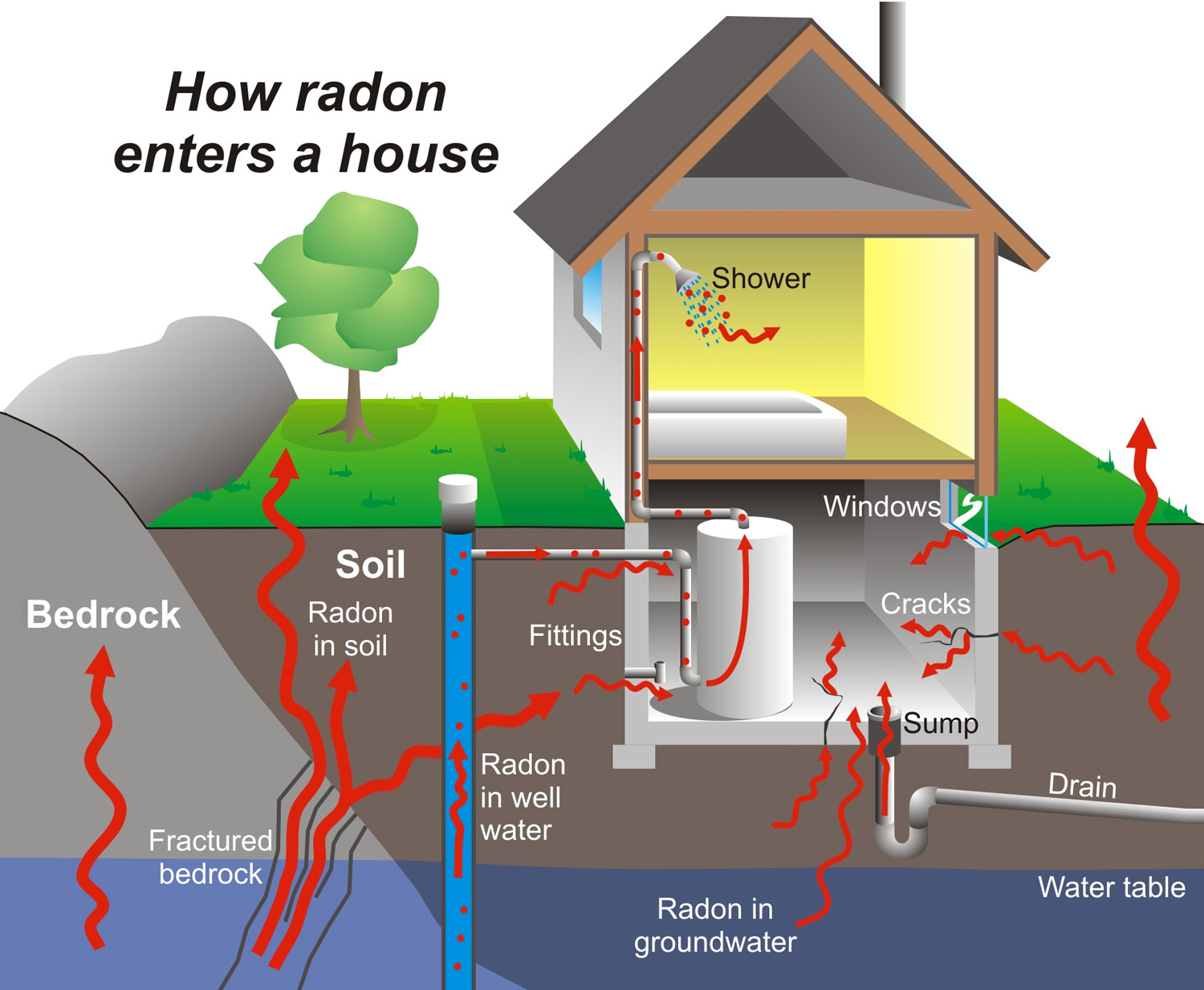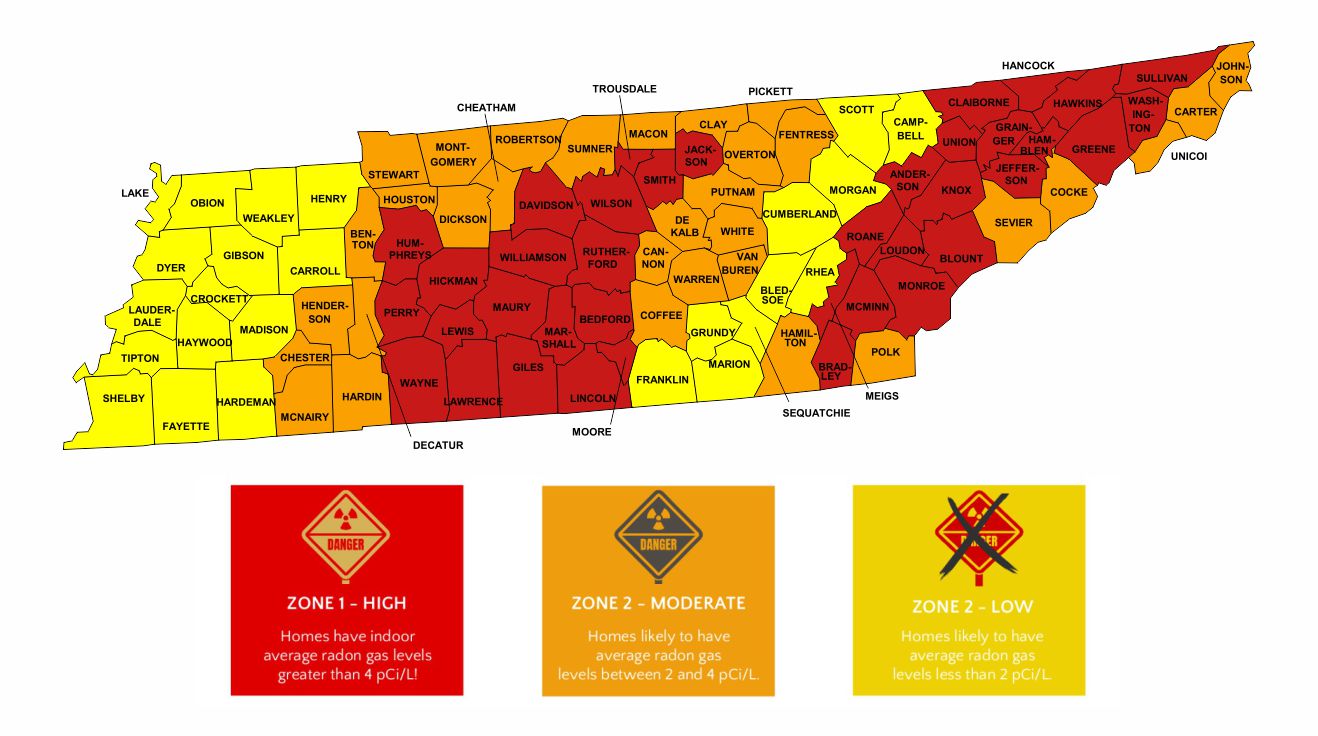
What is Radon and How Does it Enter Your Home?
Radon is cancer-causing, radiative gas.
You cannot see, taste, or smell radon.
But it is still a serious issue that homeowners face. Radon is a
radioactive gas that forms naturally in the ground when radioactive metals such as uranium, thorium,
and radium break down in rocks, soil, and groundwater. Radon gas leaves the soil and becomes part of
the air and water all around us. In outdoor environments, radon disperses so rapidly that it isn’t
considered harmful. The problem occurs when radon gets trapped in your house. It can be toxic if you
take in a lot of it in over a long period of time. When you breathe it in, radon gets into the lining of your
lungs and gives off radiation. Over time, this damages the cells and leads to lung cancer. In fact, the
Surgeon General says radon is the second leading cause of lung cancer in the United States.
And the
risk of developing lung cancer from radon exposure is estimated at between 10 to 20 times greater for
smokers as compared to nonsmokers.
The estimation is that 21,000 people die each year from radon-related lung cancer.
